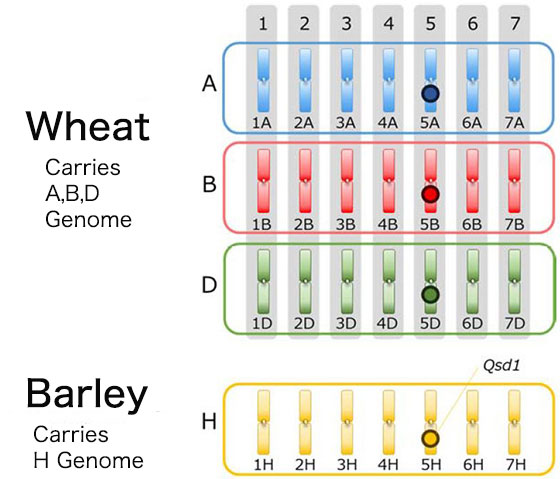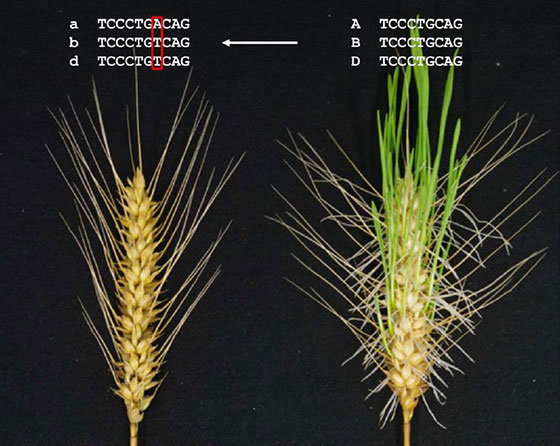News
Okayama University and NARO Team Succeeds in Genome Editing to Make Rain-Enduring Wheat Updated in October 2019
A research group consisting of Okayama University, National Agriculture and Food Research Organization (NARO) and others announced recently that they developed a type of wheat which is less likely to sprout or germinate under rain. This was achieved through genome editing and will prevent the quality of flour from deteriorating. There are high expectations that this technology will allow wheat to withstand rain during harvest season. Japan and Europe fall into such climate zones affected from rain during harvest season. The results were published in the U.S.-based journal Cell Reports dated July 30.
With Prof. Kazuhiro Sato (Okayama University, Institute of Plant Science and Resources), and Chief Researcher Dr. Fumitaka Abe (NARO, Institute of Crop Science) leading the team, researchers from Obihiro University of Agriculture and Veterinary Medicine, Yokohama City University also participated in the project.
According to the team, wheat evolved into its present state as three different plants gradually got mixed during a period of 6,000 years. Unlike human genetic information, wheat has three sets of genomes (A genome, B genome, and D genome). Each genome consists of 7 pairs of chromosomes. It has been difficult to improve properties of plants with multiple genomes and overlapping genes.
Prof. Sato and his colleagues focused on a gene called Qsd1 found in barley, which has only one genome. Qsd1 is related to “seed dormancy.” The plant will not sprout or germinate but remain dormant even under favorable conditions involving rainfall. It was already known that the seed would stay dormant for longer periods when Qsd1 was not working. Having a long dormancy would be a great plus to prevent wheat or others grain seeds from sprouting under rain.
In each of the 3 wheat genome sets (A, B and D), the research group used a genome editing technology called CRISPR-Cas9 and simultaneously modified the genes corresponding to Qsd1. Consequently, the team was able to make a type of wheat that would not respond to Qsd1: a wheat that is difficult to sprout even if it was placed under a favorable environment. The team conducted an experiment by pouring water onto the seeds while they were still inside the ear of the wheat. As a result, germination was noticeably delayed compared to ordinary wheat.
This phenomenon of early sprouting while the seed is inside the ear of the wheat, is called “spike germination.” Flour milled from wheat that sprouted before harvest lacks quality. Its value as commodity would drop significantly. According to NARO, economic loss caused by spike germination in Hokkaido, Japan amounted to 14 billion yen in 2016. The research group said that their accomplishments can have a positive impact both on the economy and on the R&D front.
Cell Reports: Genome-Edited Triple-Recessive Mutation Alters Seed Dormancy in Wheat


Right: Wheat that began to sprout while the seeds are still inside the ear.
(Provided by NARO and Okayama University)







